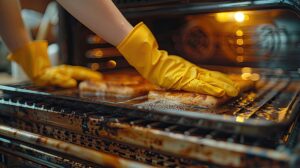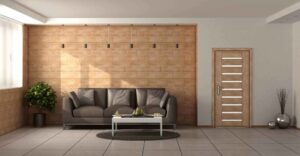
School science lab equipment is essential to engaging students in hands-on experiments and helping them gain hands-on learning experiences that bridge theoretical knowledge with practical application – providing a deeper understanding of complex scientific concepts for them to comprehend more quickly. Educational lab equipment manufacturers provide top-of-the-line tools for different science disciplines, including biology supplies, chemistry lab supplies and physics equipment.
1. Microscope
This digital compound microscope offers numerous features at a great value. Including a number 1 1/2 coverslip and dual LED light sources above and below the specimen for enhanced viewing of opaque and transparent materials, this model includes everything necessary for accurate results.
Enlarged images are produced through a combination of two lenses – an eyepiece lens and objective lens positioned closer to the specimen. Most models utilize achromatic lenses in order to correct misalignment of colors due to different indexes of refraction; some models even allow slide displacement for WSI capture.
2. Test Tubes & Test Tube Racks
Test Tubes and Test Tube Racks Test tubes are essential tools for any laboratory. Technicians need test tube racks to organize and store these tubes safely. The racks can be customized to fit different sizes of test tubes. Not only are they autoclavable and heat resistant, but their special features make them the best option available.
Some have 96-well layouts that allow for precise labeling of specimens. Others feature more compact designs to prevent tubes from spilling or shifting during transport, or from spilling during storage and transport. Additional features may include clear construction, stackable features and slant racks.
3. Heating Plates
Heating plates are portable self-contained tabletop appliances used for precisely and evenly warming containers containing liquids in an organized fashion. Most are powered by electricity but other types may use gas as an energy source.
Hot plates feature glass ceramic or enamel tops to provide superior chemical and temperature resistance, as well as magnetic stirrers to help provide more uniform temperature regulation. Used primarily to heat beakers, Erlenmeyer flasks and various hot baths within laboratories; just be careful if using open containers filled with potentially explosive materials like acetone, low-boiling petroleum ether or diethyl ether which could ignite from direct heat sources like this hot plate!
4. Pipettes
Pipettes are simple yet crucial laboratory tools used to transfer precise volumes of liquid. From plastic tubes to highly advanced electronic devices, there are various styles and options available.
Pipette features such as adjustable aspiration and dispensing speeds and intuitive displays make operation a snap for optimal lab performance, thus minimizing human error while assuring accurate results.
Pipettes help prevent repetitive strain injuries (RSIs) to laboratory personnel’s hands, an often-occurring occurrence in laboratories. This is crucial as RSI can cause serious health complications for lab staff, while protecting sample integrity and security at once.
5. Erlenmeyer Flasks
Erlenmeyer flasks are laboratory glass containers designed with a wide base and narrow neck to prevent spills or splashes when pouring liquids1. Their wide base and narrow neck prevent spills when pouring, helping prevent messy liquid transfers1.
Ideal for swirling during titration and microbial culture. Additionally, boiling reactions may also take place within these flasks if their material can withstand high heat1.
Find reliable options made of 3.3 Borosilicate glass or plastic to meet the demands of your lab. These heavy-wall flasks feature easy-to-read markings and resistance to thermal shock; additionally they come equipped with vented caps to facilitate gas exchange during shaking.
6. Spectrophotometers
Spectrophotometers are instrumental tools used for testing the concentration of liquids such as foods and chemicals. They can also analyze opaque solids like glass and semiconductor film as well as air pollution gasses. A typical instrument typically features a light source, collimator to direct light beam, monochromator to filter wavelengths out, cuvette for sample solution preparation and photoelectric detector.
Different chemical compounds contain unique atomic arrangements and bonding patterns that reflect or absorb wavelengths of visible light, creating unique colors. Spectrophotometers help identify these hues for beverages and pharmaceutical product color standards.
7. pH Meters
While pH test strips remain popular among certain lab settings, meters offer greater accuracy and consistency for labs that seek maximum precision and consistency in measuring acidity or alkalinity of solutions using electrical voltage between electrodes to convert into pH units.
When searching for the ideal pH meter, keep several factors in mind when making your selection. Take into account its ability to perform multiple simultaneous measurements as well as connect easily with lab equipment for easier documentation and maintenance tasks. Also keep calibration capabilities and maintenance considerations in mind; you may prefer one with an easy-to-read screen so multiple technicians can operate it easily.
8. Voltameters
Voltmeters measure the difference in electrical potential between two points within a circuit, and come equipped with either analog or digital displays and various measurement ranges for convenience.
Probes or leads with high input impedance connect directly to the point in the circuit where voltage measurement takes place, draining very little current from it and having minimal effect on its voltage levels.
Voltmeters are most often used to monitor Alternating Current (AC) or Direct Current (DC) circuits; however, specialist voltmeters can also measure Radio Frequency voltage levels.
9. Timer/Clock/Stopwatch
School science lab equipment suppliers helps bridge the gap between theoretical knowledge and practical skills. Reputable manufacturers understand educators and their students’ unique requirements, providing high-quality laboratory equipment that is durable, safe, and user friendly.
This laboratory supplier offers an impressive selection of science supplies for teachers and classrooms. Their Recommended Materials Center features starter kits while you can shop by subject area for specific equipment and instruments.
SWPRO has designed this stopwatch with 1/100th accuracy for timing events with hours, minutes, seconds, day, and date display as well as split mode to time multiple activities simultaneously.
10. Measuring Cylinder
Measuring Cylinders provide accurate volume measurements and are essential tools in many laboratory applications. Used either to contain or deliver liquids, they’re often more portable than flasks or beakers and offer greater versatility in use.
Considerations when purchasing a measuring cylinder include graduation increments, capacity and precision. Finer graduation increments offer more accurate measurements but may result in taller cylinders.
High-quality clear cylinders are built for durability and easy cleaning, featuring durable borosilicate glass construction that resists chemical etching while offering stability with their hexagonal base design. Class B tolerances offer reasonable accuracy for laboratory applications.







